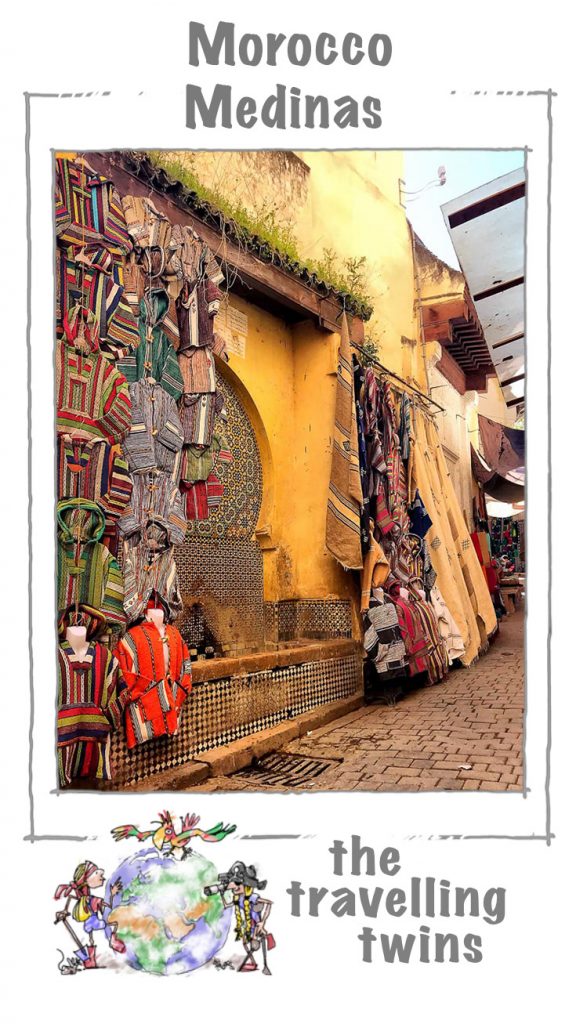Medinas (Old Towns) of Morocco are possibly the most well known feature of the country. Five of them are inscribed as Unesco World Heritage sites. All of them are fascinating to explore. They are typically characterised by a maze of narrow streets, courtyard houses (Riads) and an absence of motor traffic – if you don’t count Marrakech lunatics on mopeds. Read about 7 must see Moroccan Medinas.
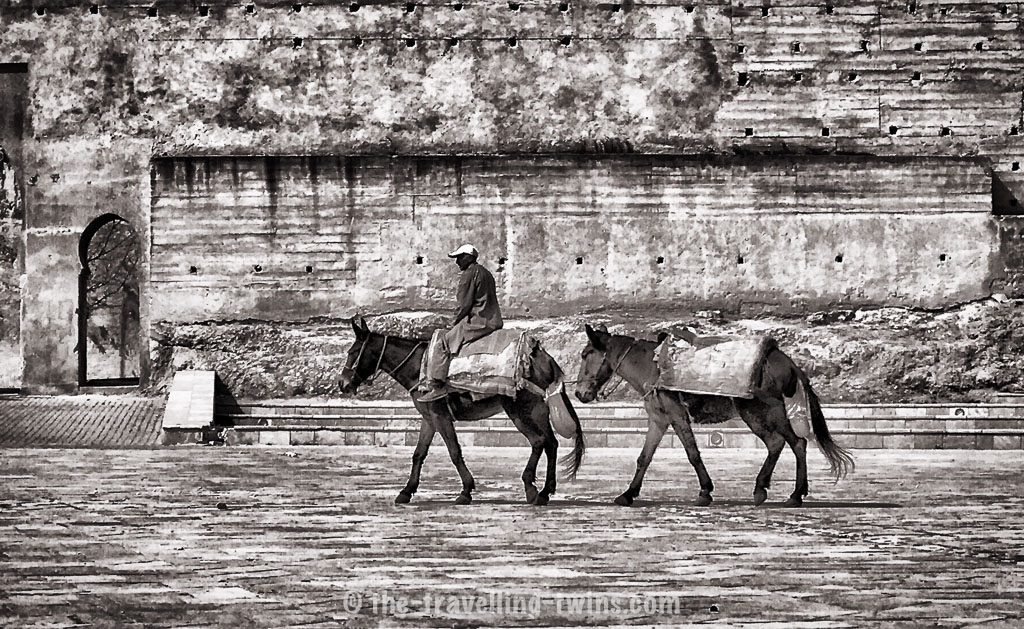
Morocco Medinas
What is a medina?
Medina is the old part of the city or a town surrounded by walls. Medinas are found in all North African countries and in Malta, not only in Morocco The word Medina in Arabic means city or town.
Since Medinas were built long time ago most of them have narrow maze like streets which don’t allow any for any vehicle traffic.
Marrakech Medina
Marrakech is the best-known medina, largely occupied by the meandering alleyways, intense stallholders and tiny squares of the Souq Semmarine. Marrakech souq is even more famous for its labyrinthine quality than for the wares for sale. Also inscribed on the Unesco World Heritage list is the adjacent market square Jemaa el-Fna.
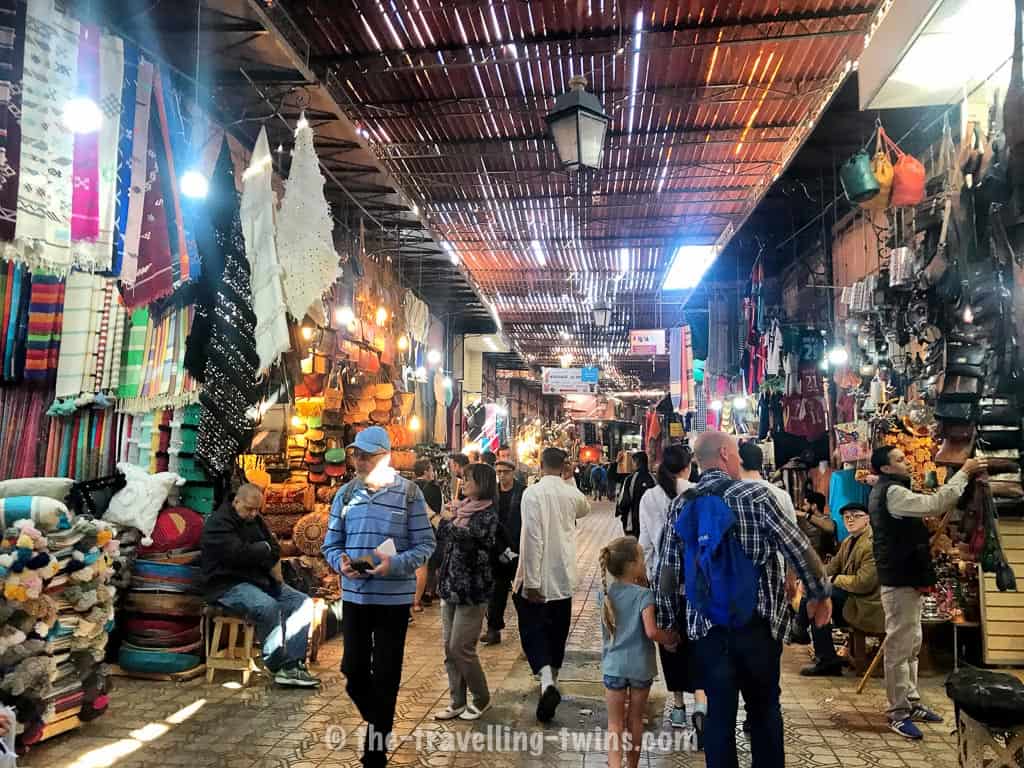
For the visitor, Marrakech Medina is principally a feast of tourist shops, but it is also very much a living city with numerous mosques, restaurants and hammams serving the locals too. Our favourite thing about it are the craftsmen’s workshops. These are real working places where stunning metalwork, fabrics and woodwork are created for sale nearby. Most of these workshops are nothing more than tiny dark alcoves where you can see few wizened craftsmen welding, painting or turning some item. They will be surrounded by a plethora of benches, shelves and racks overflowing with materials, most pieces of which could better be described as scraps of materials. The workers and their crafts spill out onto the tiny streets where the ubiquitous mopeds weave around them at surprising speeds.
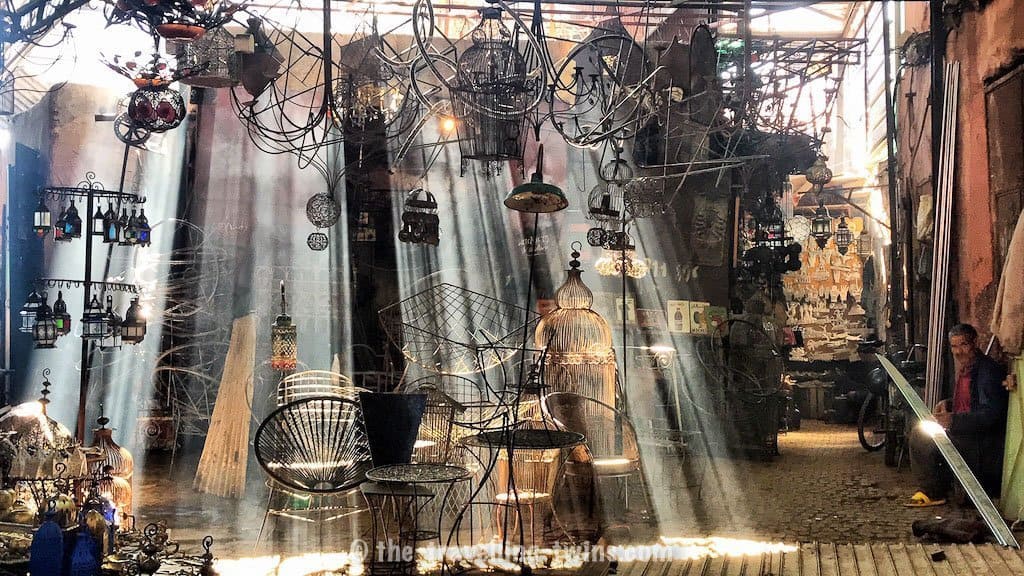
Where the narrow streets of the souq are not lined with stalls, many of the walls are fairly blank, but punctuated by occasional ornate recessed doorways, perhaps with carved stucco or mosaic-tiled archways. These archways give access to the riads which are typically three or four-storey inward-looking courtyard buildings. This inward-facing form accounts for the relatively blank external walls. Many riads have been converted to hotels and cafes, and it is well worthwhile to go inside them where you can. You may find the climbing plants of a hidden internal garden festooned over several levels of balcony. Sunlight filters down through the foliage, casting dappled light onto ancient colour-washed walls and time-worn terracotta or stone floors. Enjoy a coffee while sitting by a tinkling fountain in one of these courtyards.
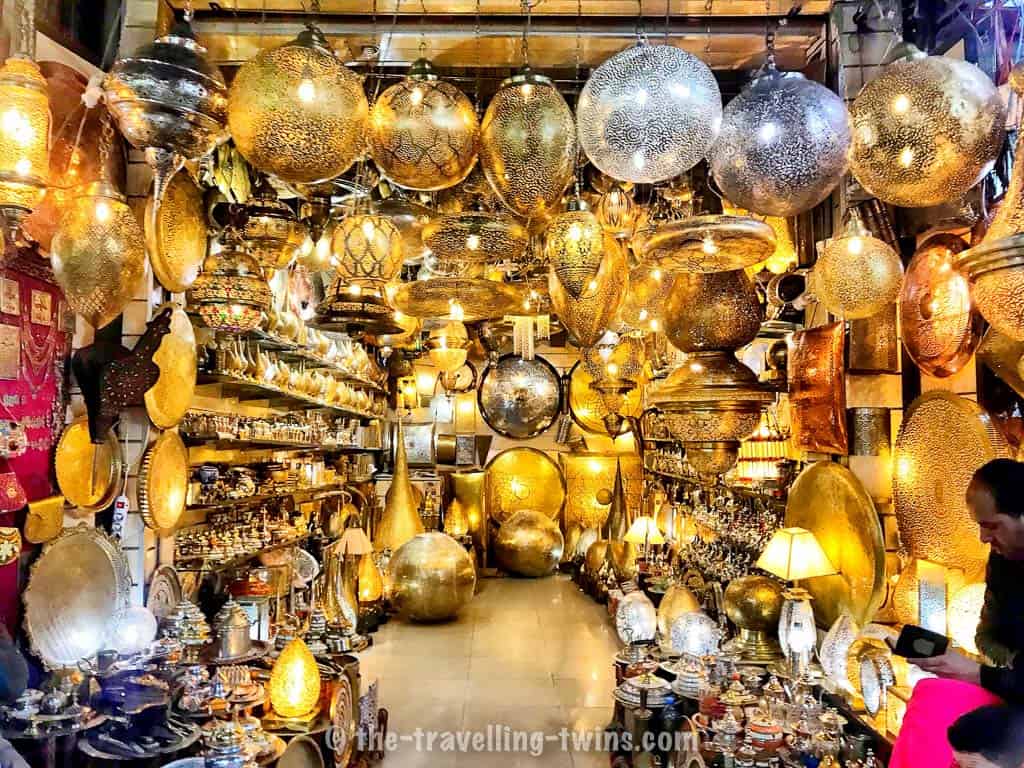
Marrakech souq is particularly good for pierced metalwork lamps and coffee pots inlaid with camel bone. If these are the Moroccan crafts that take your fancy then despite the Marrakech prices this is where you will find the best selections and variety. But note those bone-decorated pots are designed for display only. The glue would not hold if you were to use them for boiling water.
Marrakech Medina is lively and very hectic. It is comparatively expensive and very much tourist-orientated. If you are planning to go there, read our survival guide – Marrakech with Children. But it is not true that if you have seen Marrakech Medina you have seen them all, or even the best of them. The Medinas of different cities are each unique, and time spent in soaking up their characters will be repaid in the rich variety of experience.
Essaouira Medina
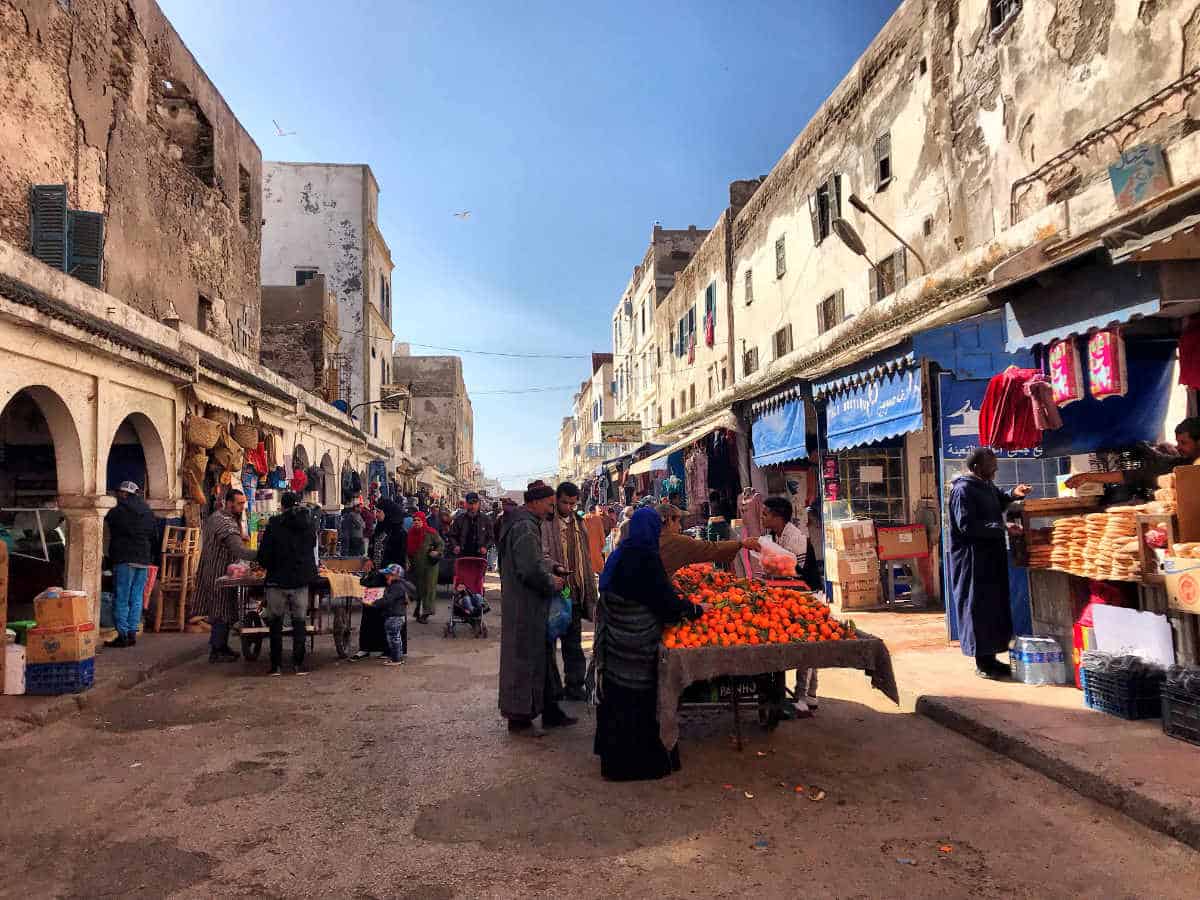
Entering one of the gates of Essaouira Medina presents you with a very different character. There are fairly wide main streets with pedestrians and handcarts, bordered by three or four-storey ancient buildings with their ground floors occupied by arcaded open fronts. It presents a timeless scene of bustling antiquity. The shops sell clothes, leatherware, carpets woodwork and animal carcases. Yes it comes a shock to see half an ox carcass hanging next to a rack of summer dresses, but you soon get used to it. Some of the arches or colonnades open into side courts, or small alleys. You can get a little bit lost here when you leave the four or five big perpendicular streets because the grain of the small alleys is not aligned with the main streets. However if you keep going you will either find yourself in a dead end and have to turn back or else you will come out on the main streets where you can orientate yourself again by the sun.
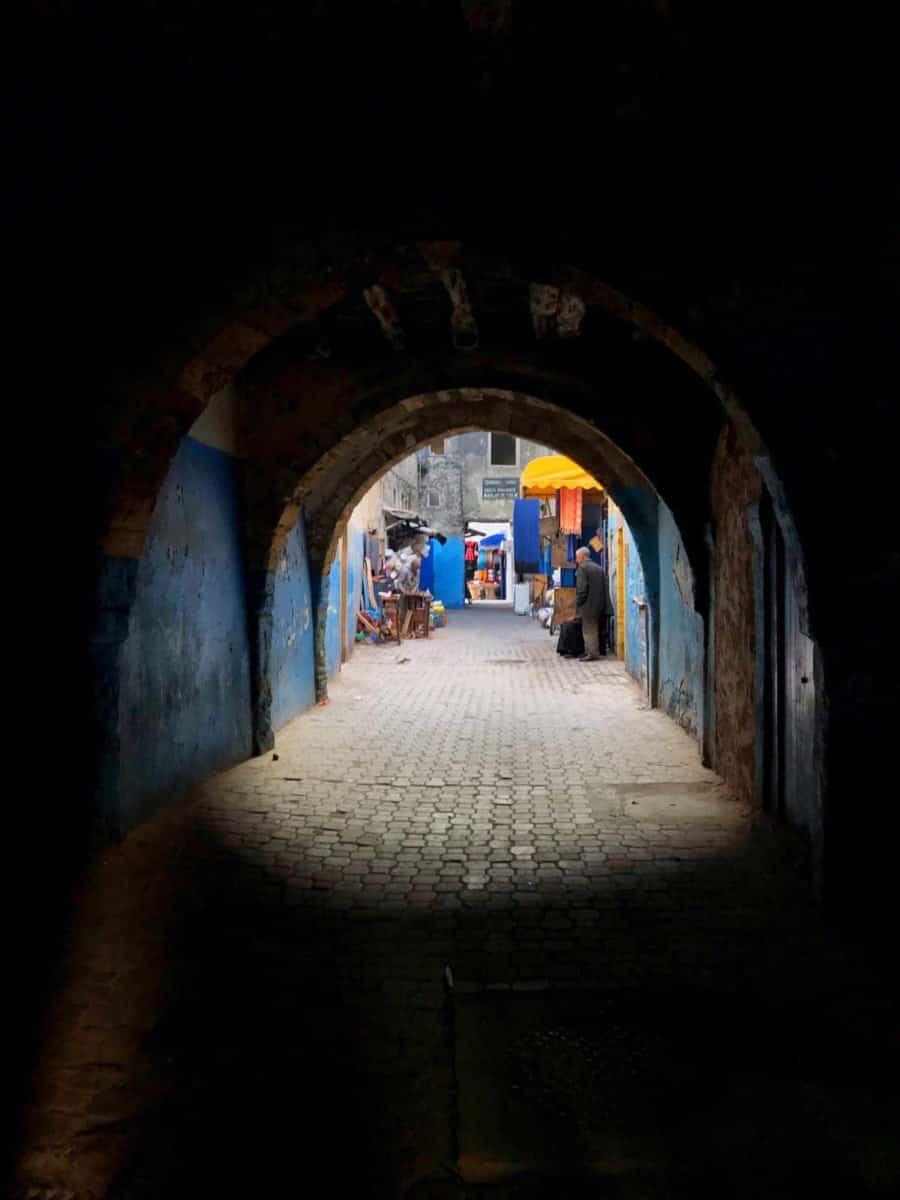
Most of these small alleys are residential, bordered by private riads, but there are hotels, hammams and a few restaurants and gift shops in some of them. Some are bridged by arches which carry rooms belonging to the residential buildings. A few of these arches are surprisingly low, requiring you to bend as you pass under them.
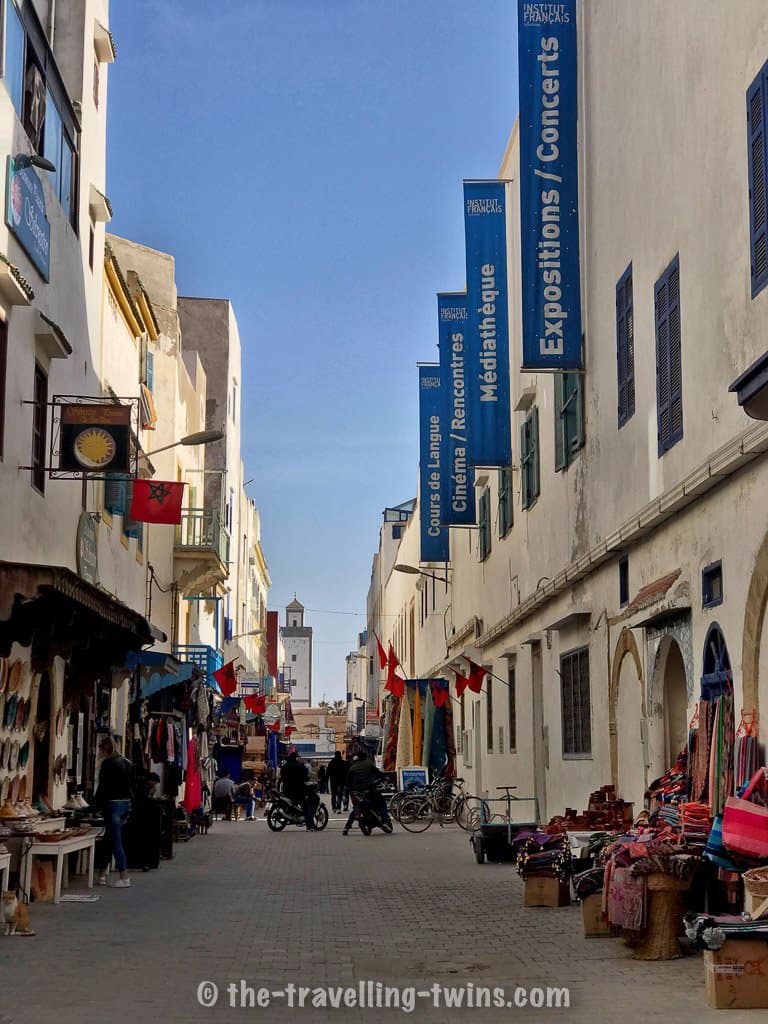
Essaouira Medina is bounded on its sea front with magnificent ramparts bristling with innumerable enormous brass cannon. The spirit of this place is much more open and less intense than Marrakech and this is reflected in the character of the salesmen. They are far less pushy and will often offer fixed prices, which will be considerably lower than you will pay for similar items after haggling in Marrakech.
Essaouira is especially good for buying Moroccan souvenirs crafted wooden objects and carpets. It does not have the range of metalwork that you will find elsewhere.
We spent over a week in Essaouira and I can say this city stole our hearts – read here about things do in Essaouira.
Rabat Medina
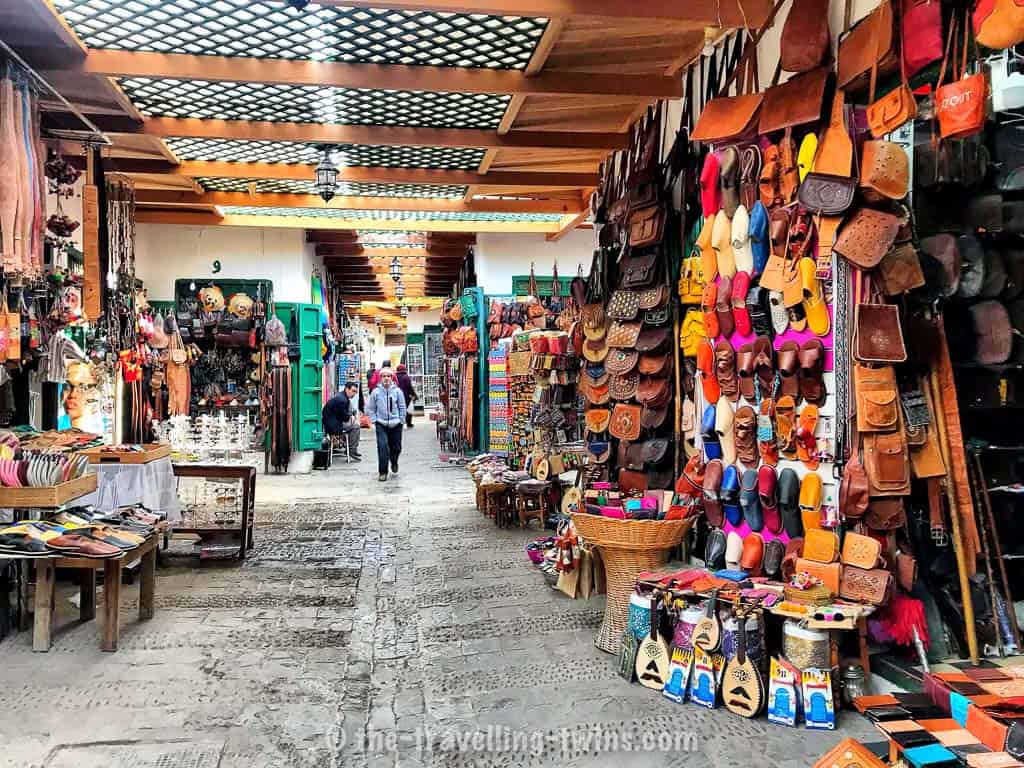
This medina is a bit different from most others. Although it is full of shops and open markets they are orientated for the locals rather than for tourists. Unfortunately this doesn’t mean that this is where you find the real stuff. Here you will find plastic shoes, satellite dishes, underwear, pharmaceuticals and cheap clothes. Among these goods, you will find stalls displaying cooked goats heads and vast ox carcasses.
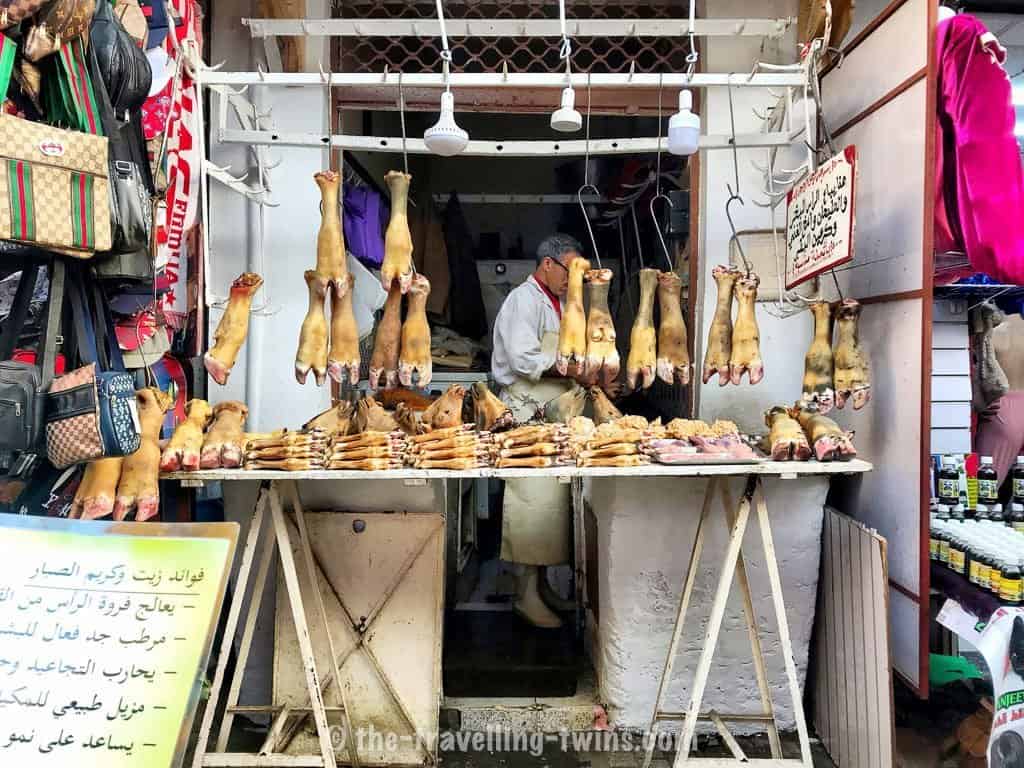
Fez Medina
The Fez al Bali Medina is the oldest part of the city of Fez. Founded in the ninth century, it has grown over the centuries to its current size occupied by over 150,000 residents. It is famous for having the largest car-free pedestrian area in the world at 220 ha (540 acres). Fes al Bali is also home to the oldest university in the world.
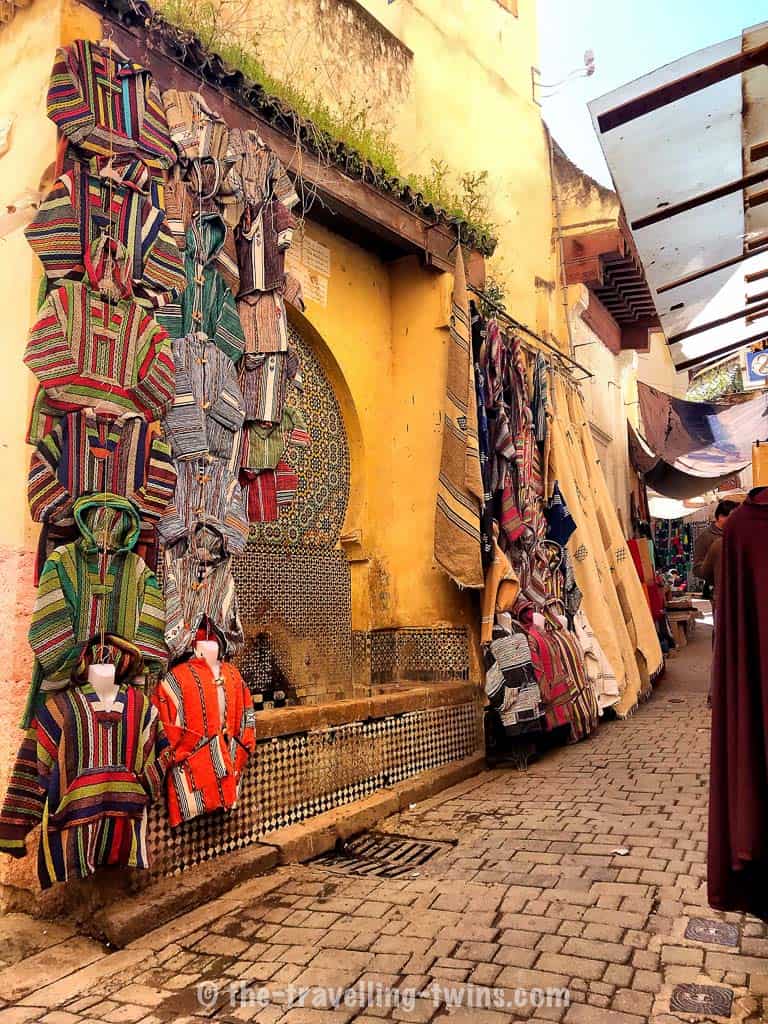
It was one of the most tourist friendly medina for us. Less hectic than, we did enjoy strolling through the streets or spending time in the coffee shop and looking how life pass by.
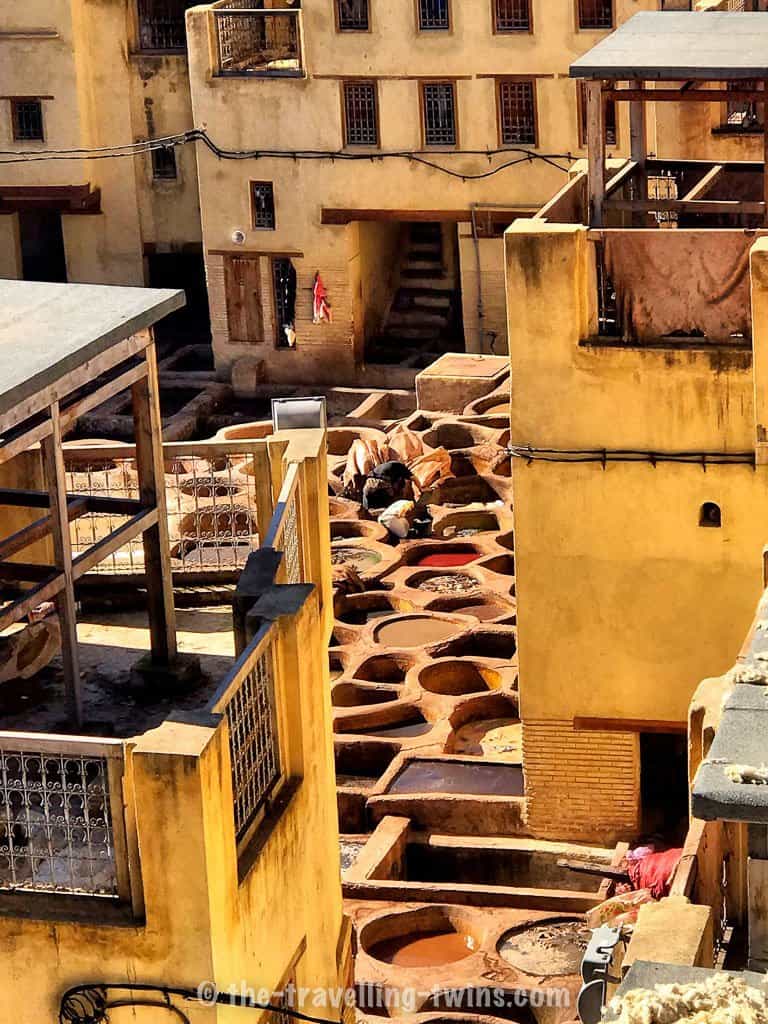
Medina in Fes is good for buying leather goods, they are cheaper than in any other Morrocan Medina.
Medina in Meknes
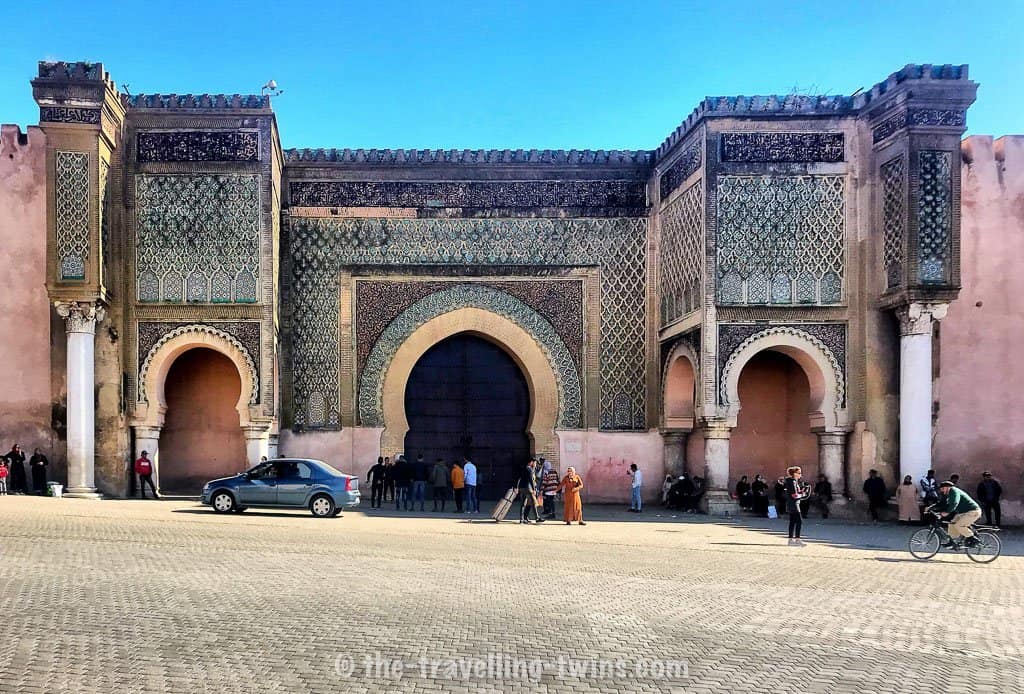
The Medina in Meknes is probably the least touristy Medina in Morocco – even less-so than Rabat. We called it Orange Town, since most of the walls are colour-washed in either yellow and orange. I wouldn’t say there was much to see in there beside Royal Stables and Voulubilis which is 30 Km away, but its Meknes Medina is on the UNESCO sites
Medina in Tetouan
Tetouan Medina is sometimes called The White Dove Its Probably the most underrated medina in Morocco, same time one of the most interesting. We spent the whole day walking and exploring it and it felt like we were the only tourist in there.
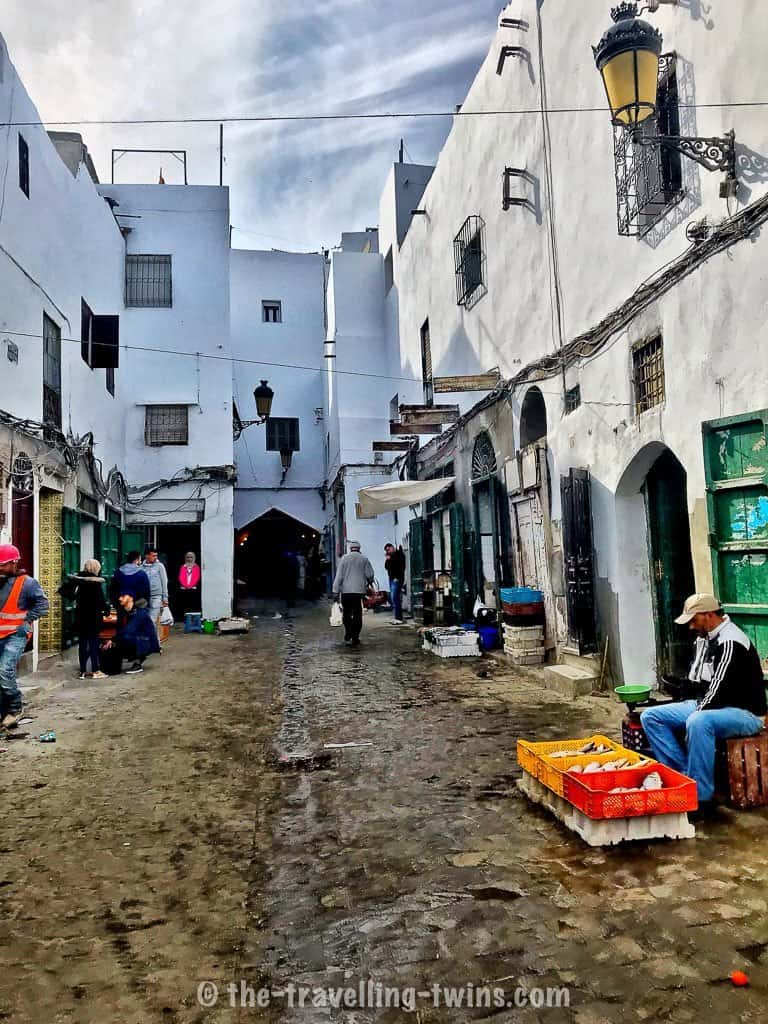
The Medina of Tetouan is located on the steep slopes of the Jebel Dersa. you could divide it into 3 parts – Moorish part build in the Islamic period it had particular importance from the 8th century onwards since it served as the point of connection between Morocco and Andalusia.
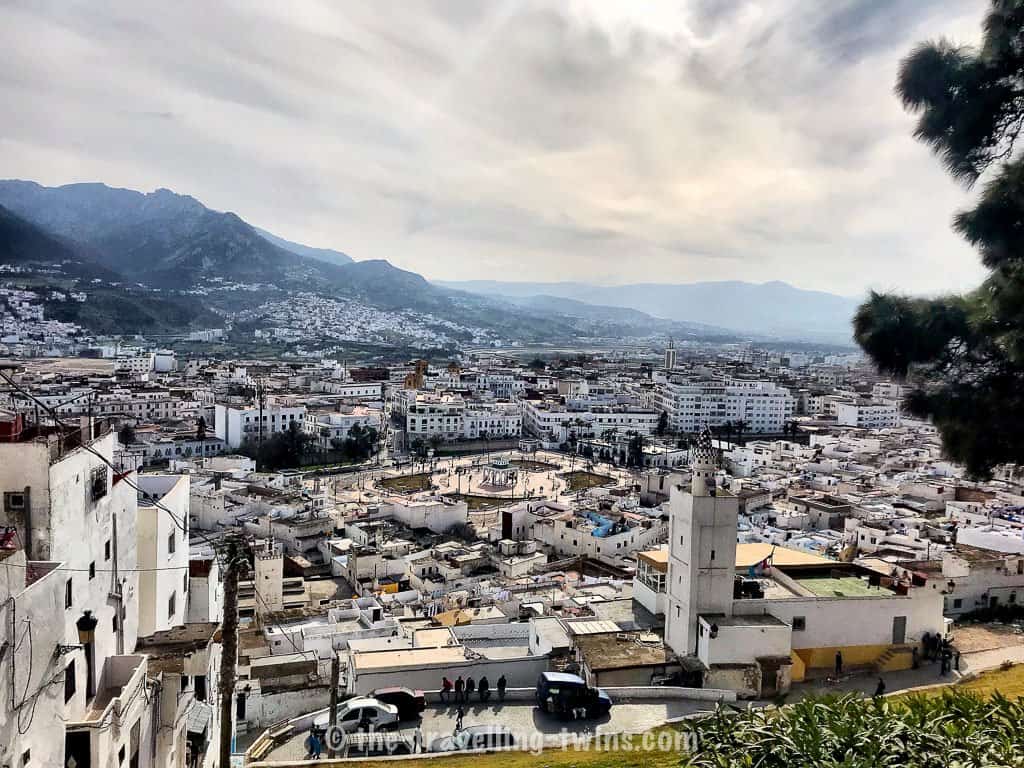
Medina in Chefchaouen
Medina in Chefchaouen is probably the most charming medina of them all. Small streets are all painted in powdery blues, not only for the sake of tourists and instagramers but traditionally that is how they are. Chefchaouen is one of the 5 blue cities around the world.
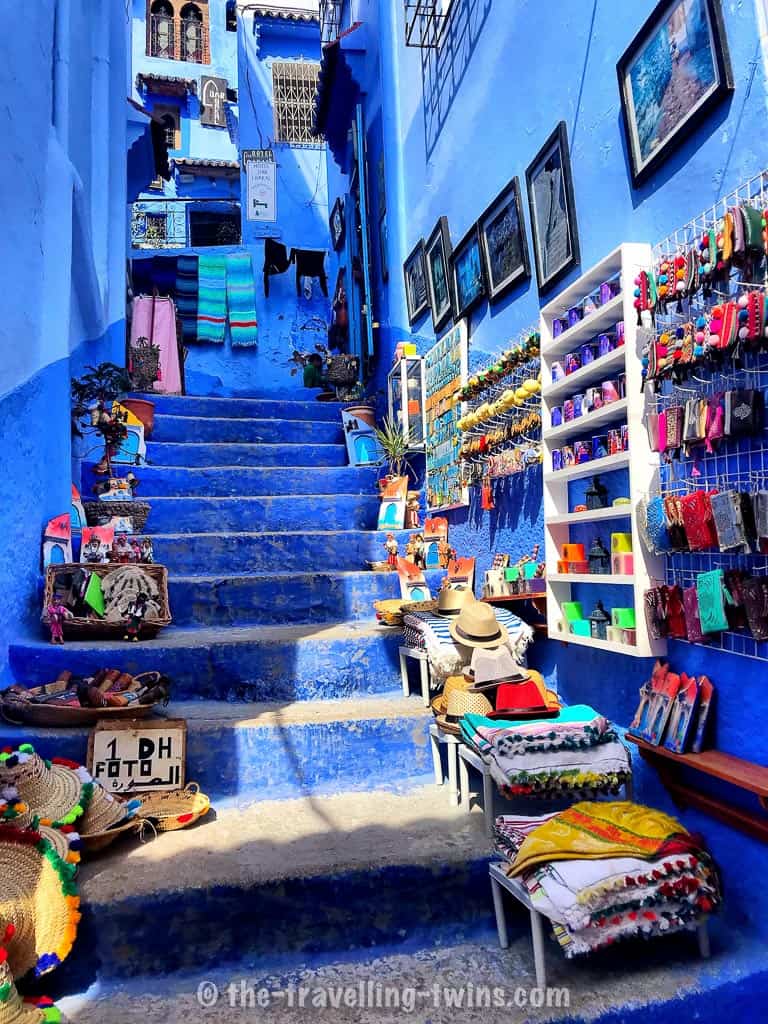
Get up in the early morning when the place is still asleep and the empty blue streets, look almost like a set for a fairy tale. During the day you almost have to look for uncovered areas of blue paint since almost every square inch which isn’t covered with wares for sale is occupied by Asian girls taking selfies for Instagram.
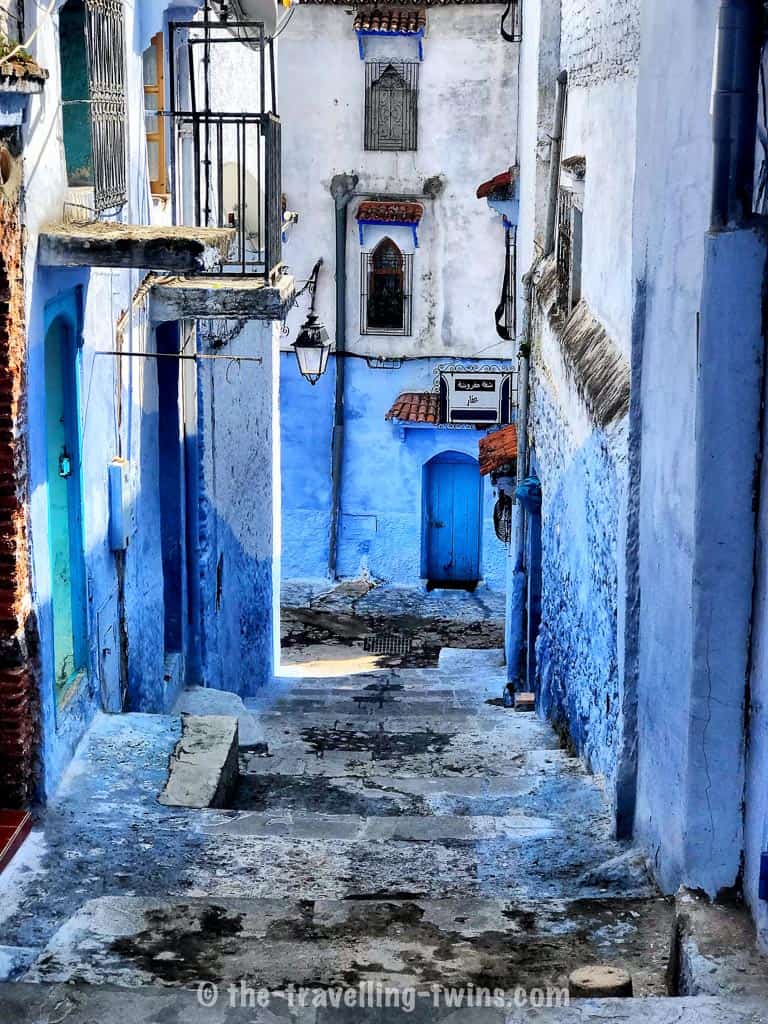
The most photographed blue steps are prepared every morning with a collection basket asking tourists to pay for their photos. I have a strange feeling about the place – Other than Marrakech this was the most touristy place in Morocco – however, it still managed to be very laid back in character. We weren’t disappointed. It is definitely a great place to visit.
Morocco Medinas – Pin it for later
